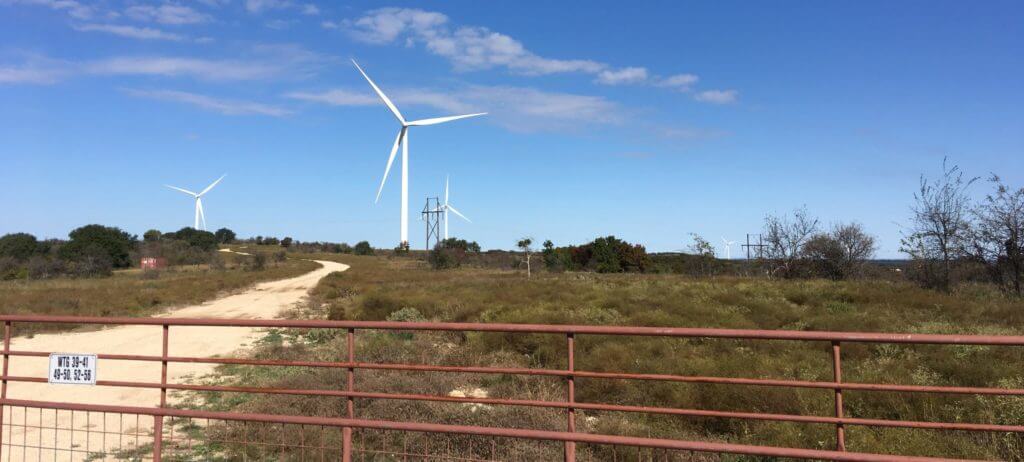Fact check: American Enterprise Institute epic FAIL on study of wind costs
We were recently alerted to a lengthy attack on wind energy that was released by the American Enterprise Institute (AEI) in its “Energy and Environment Outlook.” There are many serious errors in the paper, including two major mistakes that completely bring down the central argument of the paper. In a surprising turn, once those errors are corrected, the data presented in the paper actually make a compelling case for why America should be increasing its use of renewable energy.
Study overestimates cost of wind energy by 500 percent
The central argument of the paper, that wind is not cost effective compared to fossil-fired generation, rests upon what we will charitably call a major math error. Author Benjamin Zycher drastically inflates the cost of wind energy by adding $368/MWh, or 36.8 cents per kilowatt-hour, to the cost of wind energy for a supposed need for “backup capacity,” increasing his calculated cost for wind energy by 250% to a remarkable $517/MWh (51.7 cents/kWh). As the citation for that added cost, Mr. Zycher references two Department of Energy (DOE) data tables. Unfortunately for him, neither the $368/MWh figure, nor any figure that would allow one to arrive at that number, appears anywhere in the tables he references.
In his calculations, Mr. Zycher claims that backup capacity is needed for 3-4.5% of the nameplate capacity of wind energy added to the utility system, based on analysis done by the California system operator. In addition, the DOE tables cited by Mr. Zycher indicate the cost of that backup natural gas capacity would be $648-984 per kilowatt of gas capacity. Taking those numbers at face value, multiplying 4.5% by the $984/kw backup cost indicates that the cost of backup capacity would add a mere $44.28 to the cost of each installed kilowatt of wind energy, adding just over 2% to the cost of wind energy, rather than the 250% that he claims. Thus, Mr. Zycher’s assumed cost for backup is wrong by a factor of at least 100. Even if drastically higher assumptions are used for the quantity of backup capacity needed and for the capital and operating cost of those reserves, the added cost for wind energy is still far less than a tenth of the amount Mr. Zycher claims.
Mr. Zycher further compounds this error by using outdated data for the cost of wind energy. He references an out-of-date DOE calculation that puts the total levelized cost of wind energy at $149.3/MWh (14.9 cents/kWh); if he had used the current version of that DOE calculation, released in November 2010, he would have found that the total levelized cost of wind energy had fallen to $97/MWh (9.7 cents/kWh). As a result of those two errors alone, Mr. Zycher overstates the cost of wind energy by more than 500%. The errors also bring down all of Mr. Zycher’s subsequent attempts to argue that wind energy does not result in net job creation or consumer savings, because those claims are based entirely on Mr. Zycher’s grossly inflated, erroneous costs for wind energy.
More current assessments put the cost of wind energy even lower than the November 2010 DOE calculation. A February 2012 analysis by the Lawrence Berkeley National Laboratory puts the current cost of wind energy, without the inclusion of any government incentives, at between $60-90/MWh (6-9 cents/kWh).
Finally, it is worth pointing out that Mr. Zycher ignores the fact that all sources of electricity require backup generation. Large fossil and nuclear power plants require utility system operators to hold large quantities of generation in reserve in case one of those plants experiences an unexpected outage, as all power plants do on a frequent basis. For large fossil and nuclear generators, that means making 1000+ MW of expensive, fast-acting reserve generation–enough to power a small city–available 24/7/365. In contrast, the output of wind energy tends to change slowly over many hours, and those changes are typically predicted through the use of wind energy forecasting. Importantly, slow changes on the power system are accommodated through the use slower-responding reserve generation that typically costs a few percent of what fast-acting reserves cost.
The Real Cost of Fossil Fuels
In Section 2 of his paper, Mr. Zycher acknowledges the fact that fossil fuel sources of energy impose massive costs on society by harming public health and degrading the environment. To quote him directly, “The estimated externality costs for coal range from 0.1 cents per kilowatt hour (kWh) to 26.5 cents per kWh. For gas generation, the range is 0.1-10.2 cents per kWh. For oil, nuclear, and hydro generation, the respective ranges are 0.4-16.5 cents per kWh, 0-4.9 cents per kWh, and 0-2.1 cents per kWh.” He goes on to note that “If we use those figures and the highest estimates by fuel type noted above to compare a weighted-average externality cost for nonrenewable generation, the externality cost per conventional kWh is about 15.5 cents, or $155 per MWh. If we use instead the midpoints of the externality ranges listed above, the weighted average externality cost is 7.8 cents per kWh, or $78 per MWh.”
Mr. Zycher then attempts to explain that those massive costs are not a cause for concern because “the cost of backup capacity for existing wind and solar generation is about $368/MWh, or roughly 37 cents per kWh.” As we explained above, that backup cost is an entirely fabricated number based on what we will charitably assume was a math error by Mr. Zycher, overstating any actual backup cost by a factor of at least 100. Correcting for that error and for his use of outdated wind cost data, and including Mr. Zycher’s own externality costs for fossil fuel generation, Mr. Zycher’s own data shows that wind energy has a far lower total cost to society than fossil fuels! Thus, based on Mr. Zycher’s own logic and numbers (once accurate information on the cost of wind is used), the reader is left with the unavoidable conclusion that wind energy is by the far the most cost-effective and socially optimal means of powering our society.
The Question of Subsidies
Mr. Zycher uses misleading statistics to overstate the incentives provided to renewable energy while drastically understating the subsidies provided to fossil and nuclear generation. The fossil fuel industry has enjoyed permanent subsidies that have been written into the tax code for almost 100 years, while renewables have only received intermittent support for a short period of time. According to an October 2011 report prepared for the Nuclear Energy Institute, natural gas received $121 billion in government subsidies between 1950 and 2010, coal received $104 billion, and nuclear received $73 billion; in contrast, all renewables received only $74 billion, accounting for just 9% of total federal energy support.
Land Use
Mr. Zycher also uses misleading statistics to greatly exaggerate the land used by wind energy. Only 2-5% of the land area of a typical wind plant is actually taken up by wind turbines and other equipment, while the remaining 95-98% can continue being used for farming, ranching, or whatever its prior use was. A 2008 DOE report concluded that obtaining 20% of the nation’s electricity from wind energy would use less land than is currently occupied by the city of Anchorage, Alaska. According to the DOE report, about four times that amount of land is disturbed anew each and every year by coal mining; in contrast, wind plants continue to use the same land year after year and do not require the successive mining of new land.
U.S. Wind Resources
Mr. Zycher next pursues the rather unusual argument that the U.S. is at risk of fully utilizing our best wind resources, and that wind energy costs will rise as wind project developers are forced to use less optimal wind sites. In doing so, Mr. Zycher ignores the 2008 DOE Report’s detailed assessment that the U.S. possesses around 14,000 GW of economically viable wind resources, which for a sense of scale is about 300 times greater than the amount of wind energy currently installed in the U.S. and enough to meet our current electricity needs more than a dozen times over. Moreover, the recent Lawrence Berkeley National Laboratory analysis found that advances in wind turbine technology have increased the economically viable wind resource estimates at least several times over.
What was the basis for Mr. Zycher’s conclusion that we are at risk of exhausting our wind resources? “The capacity factors for non-hydroelectric renewables declined almost monotonically from 57 percent to 33.8 percent [from 1998-2009], suggesting that as renewable capacity has expanded, developers have been forced onto increasingly unfavorable sites.” Again being charitable, we will assume that Mr. Zycher did not understand that the more obvious explanation for that decline is that the majority of America’s non-hydroelectric renewable output in 1998 came from geothermal plants operating at capacity factors of near 100%, while today the renewable output is dominated by wind and solar output that have lower average capacity factors.
Related articles:
American Enterprise Institute
Fact check: Hayward misleads on wind and utility systems, October 7, 2011
From AEI blog: Greatest hits of disinformation, November 9, 2010
Economics of Wind Power
California PUC: Renewable energy procurement up in 2011, costs falling, February 8, 2012
More savings for ratepayers in Southeast as Louisiana utility ups wind purchases, January 26, 2012
Southeast sees consumer savings, jobs from wind, but tax credit extension needed, January 10, 2012
Is wind power holding electricity costs down?, January 3, 2012
Wind power increasingly competitive and productive, new reports find, November 10, 2011
National lab report: Wind turbine prices drop as designs improve, U.S. supply chain develops, November 1, 2011
Xcel Energy: More wind, less cost, October 31, 2011
Citing lower costs, Mich. utility slashes renewable energy surcharge, September 8, 2011




